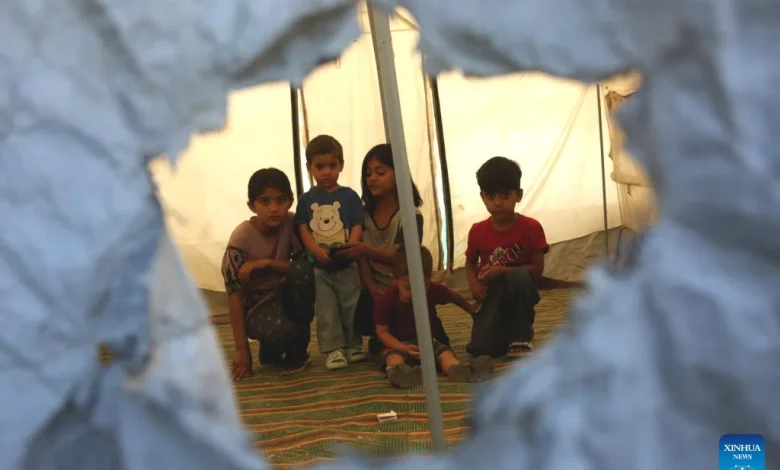Afghanistan Faces Economic Strain from Mass Return of Migrants

A massive wave of returning migrants from Iran and Pakistan over recent months has put mounting pressure on Afghanistan’s fragile economy, triggering rapid changes in the labor market, commodity prices, and daily life.
Thousands of families have re-entered the country with no belongings, abruptly shifting local market dynamics, employment availability, and living conditions. Analysts say this wave is not just a humanitarian crisis for returnees, but a widespread economic challenge affecting both urban and rural communities.
According to the International Organization for Migration (IOM), over 1.4 million people have been expelled or forced to leave Iran and Pakistan—or have returned voluntarily due to economic hardship and residency restrictions—since the start of 2025. The IOM reports that 62% of returnees arrived without any income, and 48% lacked shelter. Many families faced immediate shortages of food, housing, and employment, with a significant portion quickly falling into debt.
With economic growth in Afghanistan estimated by the World Bank at under 1%, the influx has had immediate and tangible market repercussions.
Compounding the crisis are cuts in foreign aid and a weakened domestic economy. This volatile mix has deepened inequality, put extra pressure on local workers, and driven up living costs.
Afghanistan’s labor market already operated under strain. UNDP estimates real unemployment at around 33% in 2025. The influx of hundreds of thousands of new job-seekers in a nation with limited capacity has intensified competition. Many returnees are seeking work in sectors like day labor, construction, transportation, small trades, and agriculture—fields that local communities also rely on for livelihood.
With job-seekers outnumbering available positions, wages have stagnated or declined. Field reports show that many workers now accept lower pay or harsher conditions. Some families have even sent women and children into informal labor to make ends meet.
Returnees without specialized skills from Iran or Pakistan are particularly vulnerable, often being the last to secure employment.
Examples of wage changes include:
• In Nangarhar, daily construction wages have dropped from 350 Afghanis to 250–300 Afghanis.
• In Kandahar, demand for porter jobs has doubled, allowing employers to pay less.
• Returnees with histories of low-skill jobs abroad are frequently the lowest priority for hiring.
A labor market expert in Kabul told Deutsche Welle, “The volume of job-seekers now exceeds the capacity of Afghanistan’s economy. It’s a sudden shock that is suppressing wages in the short term.”
The surge has also sharply raised prices of basic goods in high-return areas. Demand for food, fuel, flour, rice, oil, rentals—even drinking water—has spiked.
According to the Taliban Ministry of Economy’s market price data, in provinces with heavy return flow like Nangarhar, Farah, Nimroz, and Kandahar, key staples have seen the following increases in three months:
• Flour: +10–18%
• Cooking Oil: +8–12%
• Rice: +7%
• Rent in border cities: +15–30%
Economically, the causes are clear:
• Demand is up
• Imports and reserves are limited
• Foreign aid has declined 40% in two years
Humanitarian agencies confirm that many returnee families now eat only two meals a day or skip meals entirely. Reduced aid has also decreased the supply of subsidized food and relief goods, making emergency support less effective in dampening price spikes.
At border crossings like Torkham and Spin Boldak, field reports describe returnees without shelter or sufficient money for food. The IOM provides vivid accounts:
• A five-member family returning from Iran says the father’s income fell from 500,000 Iranian rials per day (in Iran) to just 250 Afghanis. They had to sell household goods to survive the month.
• In Spin Boldak, women reported sending children to markets to do small jobs to earn money for food.
• Over 45% of returnees, according to UNHCR, lack “adequate shelter,” with some sleeping in open areas or temporary tents.
The Taliban government has attempted to ease pressure via seasonal employment projects and negotiating labor exports to other countries, but these efforts remain limited and slow. According to the World Bank, current programs cover only 10–15% of the need.
International organizations—like IOM, UNHCR, and UNDP—have responded with data collection, aid distribution, and temporary cash assistance. But reports emphasize that financial resources are constrained, and continued assistance depends on increased international support.
If unmanaged, this return wave could lead to:
• Rising unemployment and informal labor
• Wage stagnation or further decline
• Increased prices for food and housing
• Higher debt among families
• Renewed illegal migration among youth
• Social tensions in high-density areas
Analysts warn that Afghanistan’s economy cannot absorb this pressure alone and requires coordinated planning to manage the returnee population.
In summary, the 2025 migrant return wave has placed Afghanistan’s economy in a fragile position. Job market pressure, soaring prices, limited resources, and shrinking foreign aid have exacerbated the crisis. To cope, mid-term planning, rapid job creation, supply chain improvement, and stronger cooperation between the Taliban government and international institutions are urgently needed.
Unchecked, the crisis could evolve beyond economics into a broader social disaster in the months ahead.